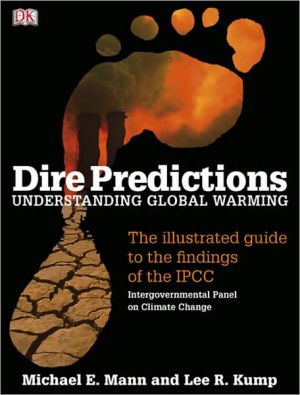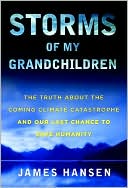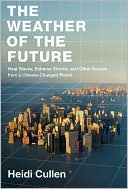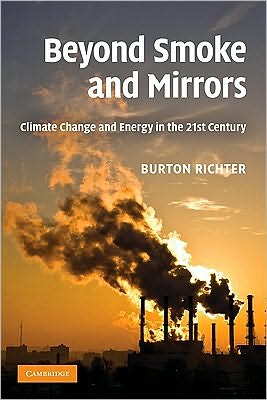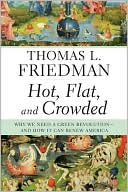Dire Predictions: Understanding Global Warming
About the Author:\ Michael E. Mann is an Associate Professor in the Departments of Meteorology and Geosciences at Pennsylvania State University and the Director of the Penn State Earth System Science Center\ \ About the Author:\ Lee R. Kump is a Professor in the Department of Geosciences at Pennsylvania State University and an associate of the Penn State Earth System Science Center and the Penn State Astrobiology Research Center
Search in google:
The Intergovernmental Panel on Climate Change (IPCC) has been issuing the essential facts and figures on climate change for nearly two decades. But the hundreds of pages of scientific evidence quoted for accuracy by the media and scientists alike, remain inscrutable to the general public who may still question the validity of climate change. Esteemed climate scientists Michael E. Mann and Lee R. Kump, have partnered with DK Publishing to present Dire Predictions-an important book in this time of global need. Dire Predictions presents the information documented by the IPCC in an illustrated, visually-stunning, and undeniably powerful way to the lay reader. The scientific findings that provide validity to the implications of climate change are presented in clear-cut graphic elements, striking images, and understandable analogies. KLIATT Dire Predictions helps the reader traverse the difficult terrain of climate change facts and figures through the use of photos, charts, and maps. It doesn't downplay the science behind the articles, but it really is all about presentation and the implications of that science. The authors are both professors of geosciences and they are able to make the information palatable to even the most science-phobic reader. They do this by dividing the material into an introduction that explains the credentials and methods used to develop their conclusions, followed by five chapters: Climate Change Basics; Climate Change Projects; The Impacts of Climate Change; Vulnerability and Adaptation to Climate Change; and Solving Global Warming. While describing climate change as "one of the greatest, if not the greatest, challenge ever faced by human society," they believe that if we work together, we have a good chance of success. The book ends with a glossary and index. I found this book to be one of the clearest and easiest to digest explanations of climate change I have ever read. Students may feel called to action and the authors give them ideas of what they need to do as the newest guardians of the Earth. Reviewer: Nola Theiss
Introduction 6About the IPCC 8About the authors 9What is up with the weather (and the climate!)? 10Climate Change BasicsThe relative impacts of humans and nature on climate 18Taking action in the face of uncertainty 20Why is it called the greenhouse effect? 22Feedback loops compound the greenhouse effect 24What are the important greenhouse gases, and where do they come from? 26Isn't carbon dioxide causing the hole in the ozone layer? 30Greenhouse gases on the rise 32Couldn't the increase in atmospheric CO[subscript 2] be the result of natural cycles? 34It's getting hotter down here! 36Is our atmosphere really warming? 38Back to the future 40But weren't scientists warning us of an imminent Ice Age only decades ago? 44How does modern warming differ from past warming trends? 46What can a decade of western North American drought tell us about the future? 48What can the European heat wave of 2003 tell us about the future? 52A tempest in a greenhouse 56The vanishing snows of Kilimanjaro 58The day aftertomorrow 60The last interglacial 62How to build a climate model 64Profile: James Hansen 66Comparing climate model predictions with observations 68Regional vs global trends 70"Fingerprints" distinguish human and natural impacts on climate 72Climate Change ProjectionsHow sensitive is the climate? 78Fossil-fuel emissions scenarios 86The next century 88The geographical pattern of future warming 92Carbon-cycle feedbacks 94Melting ice and rising sea level 98Future changes in extreme weather 100Stabilizing atmospheric CO[subscript 2] 104The Impacts of Climate ChangeThe rising impact of global warming 108Is it time to sell that beach house? 110Ecosystems 112Coral reefs 114The highway to extinction? 118Profile: James Lovelock 120Too much and too little 122Is warming from carbon dioxide leading to more air pollution? 126War 128Famine 130...Pestilence and death 132Earth, wind, and fire 134Too wet and too hot 136The polar meltdown 138Vulnerability and Adaptation to Climate ChangeIs global warming the last straw for vulnerable ecosystems? 142What is the best course for the coming century? 144It's the economy, stupid! 146A finger in the dike 148Water-management strategies 150A hard row to hoe 152Solving Global WarmingSolving global warming 156Where do all those emissions come from? 158Keeping the power turned on 160On the road again 162Building green 166Industrial CO[subscript 2] pollution 168Greener acres 170Forests 174Waste 176Geoengineering 178But what can I do about it? 180What's your carbon footprint? 182Global problems require international cooperation 184Can we achieve sustainable development? 188The ethics of climate change 190The known unknowns and the unknown unknowns 192The urgency of climate change 194Glossary 198Index 204Picture Credits/Author Acknowledgements 208
\ KLIATT - Nola Theiss\ Dire Predictions helps the reader traverse the difficult terrain of climate change facts and figures through the use of photos, charts, and maps. It doesn't downplay the science behind the articles, but it really is all about presentation and the implications of that science. The authors are both professors of geosciences and they are able to make the information palatable to even the most science-phobic reader. They do this by dividing the material into an introduction that explains the credentials and methods used to develop their conclusions, followed by five chapters: Climate Change Basics; Climate Change Projects; The Impacts of Climate Change; Vulnerability and Adaptation to Climate Change; and Solving Global Warming. While describing climate change as "one of the greatest, if not the greatest, challenge ever faced by human society," they believe that if we work together, we have a good chance of success. The book ends with a glossary and index. I found this book to be one of the clearest and easiest to digest explanations of climate change I have ever read. Students may feel called to action and the authors give them ideas of what they need to do as the newest guardians of the Earth. Reviewer: Nola Theiss\ \
